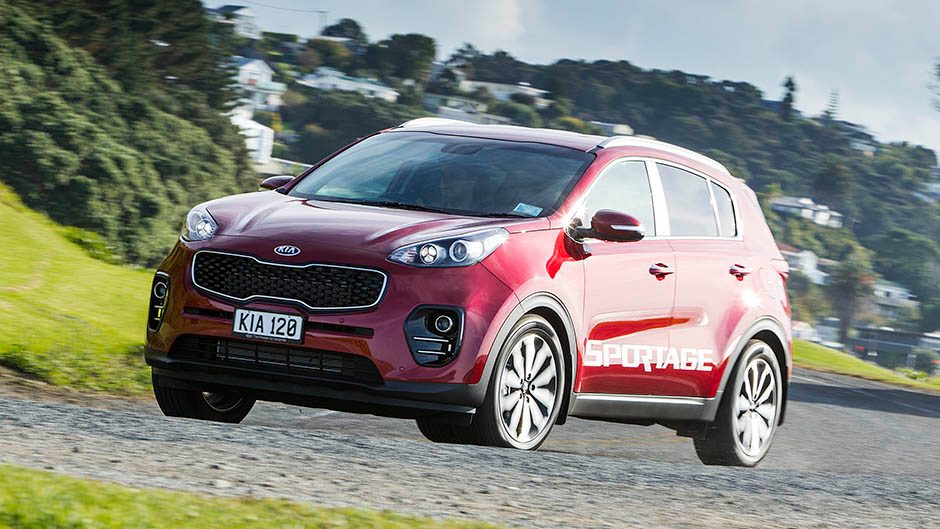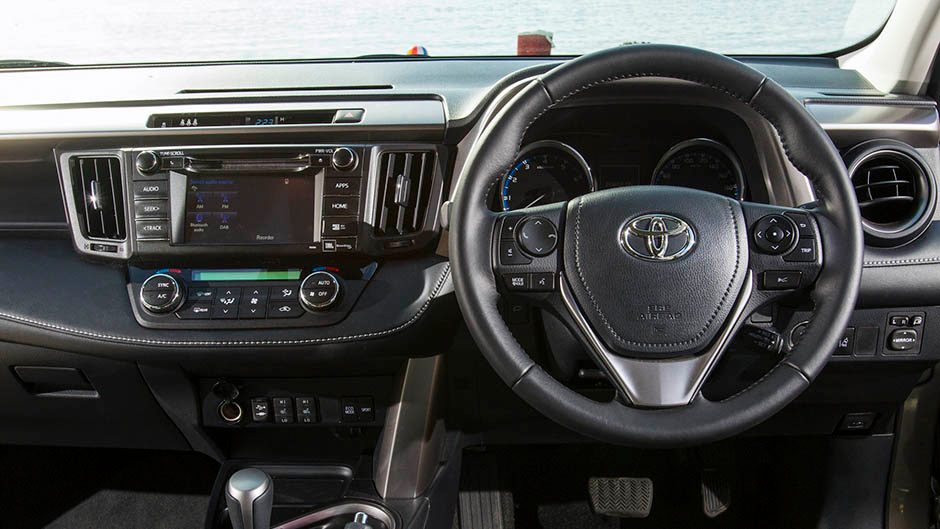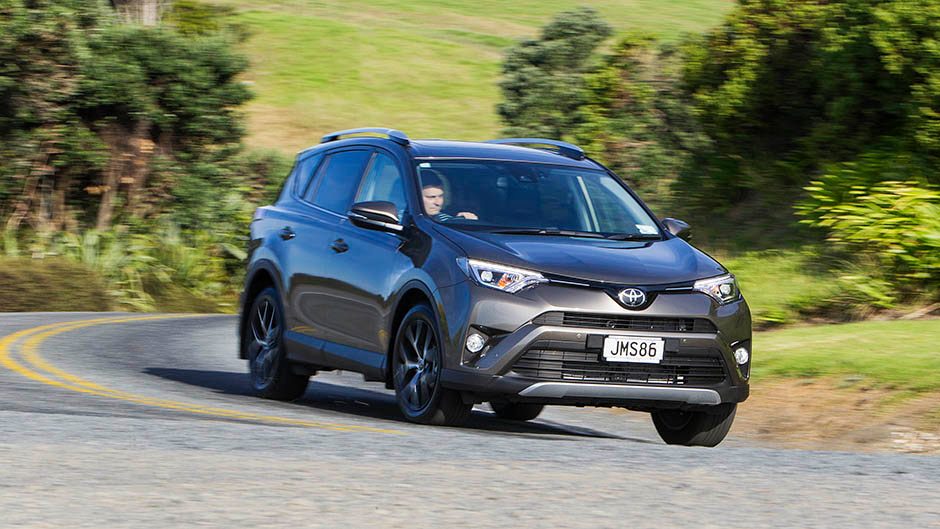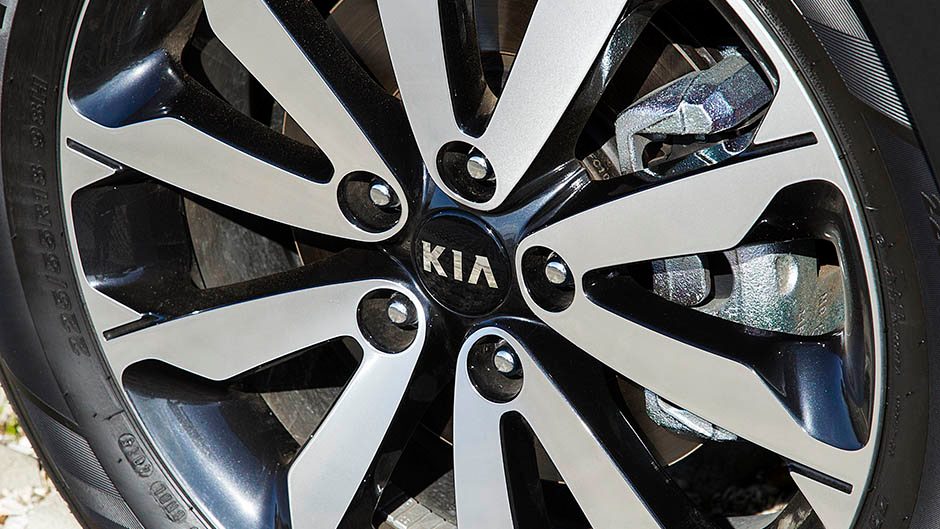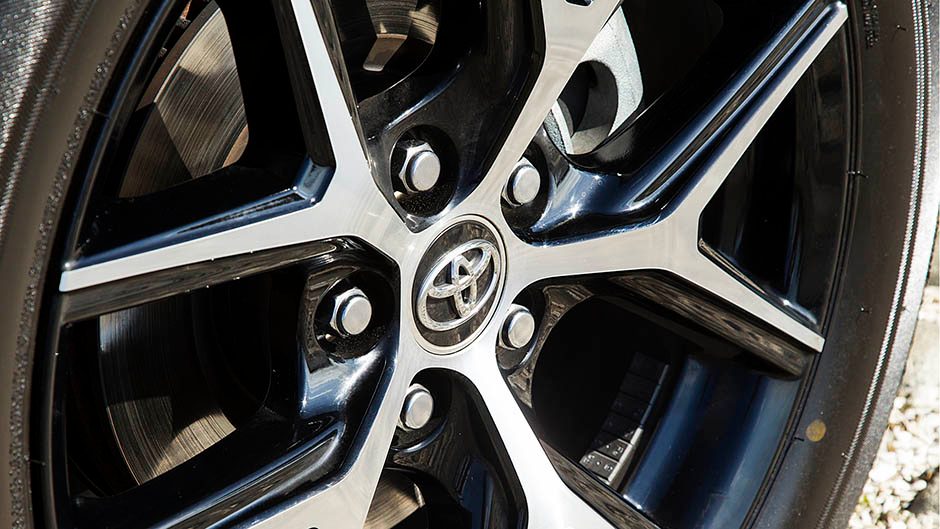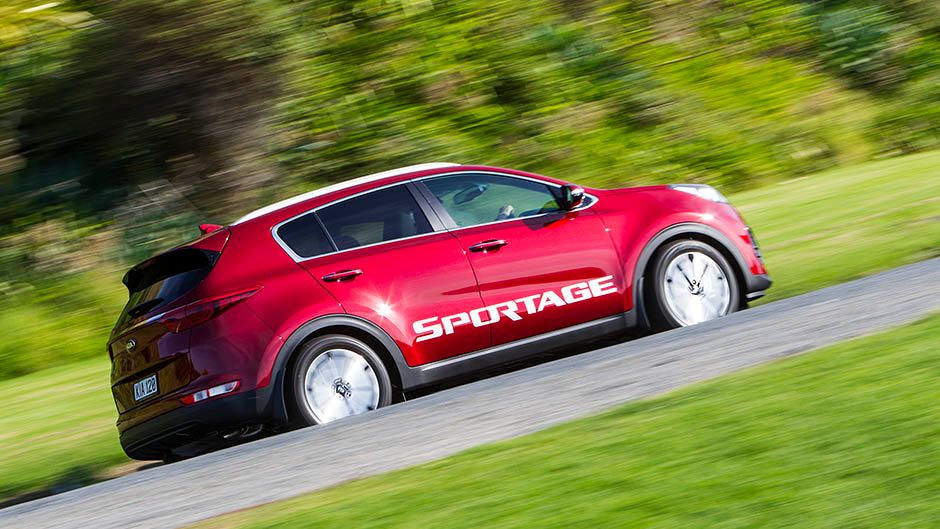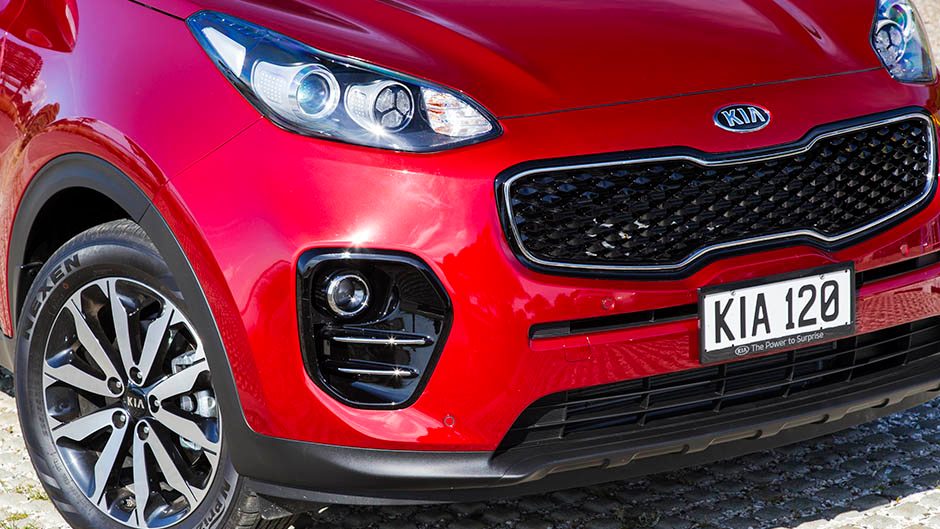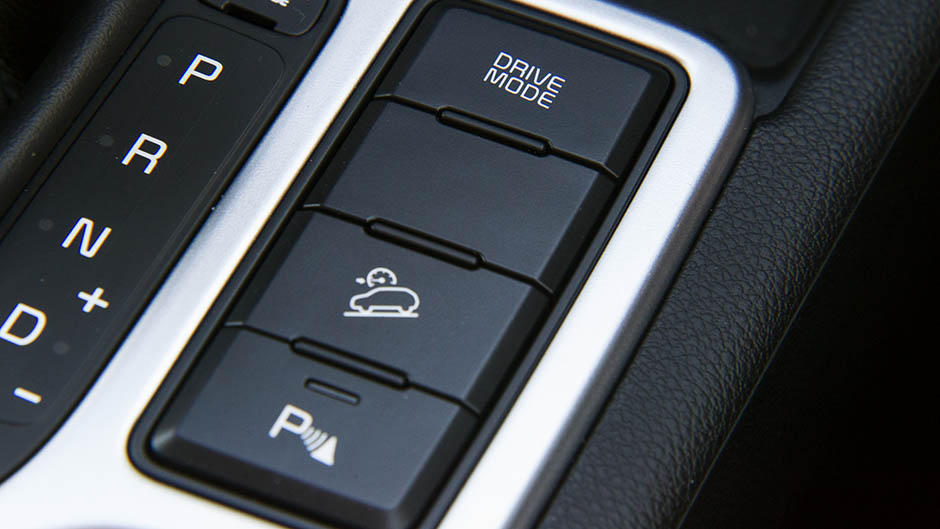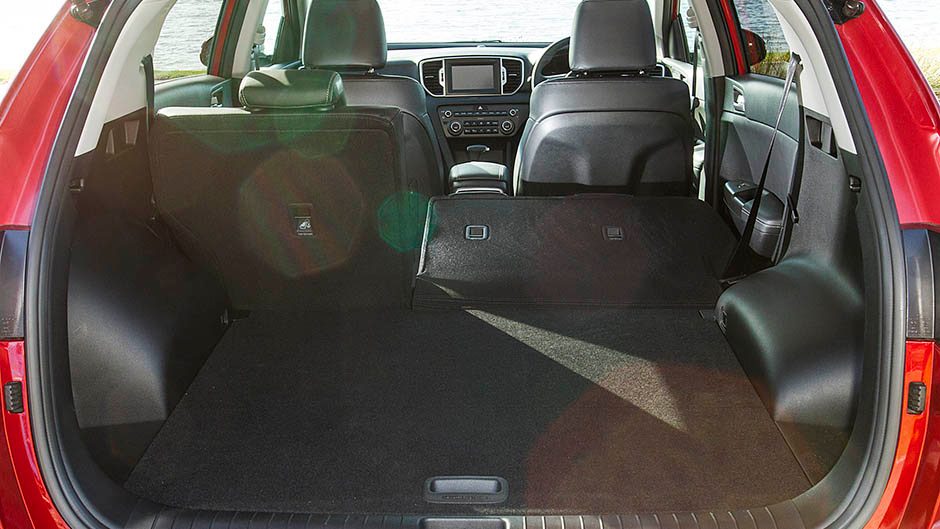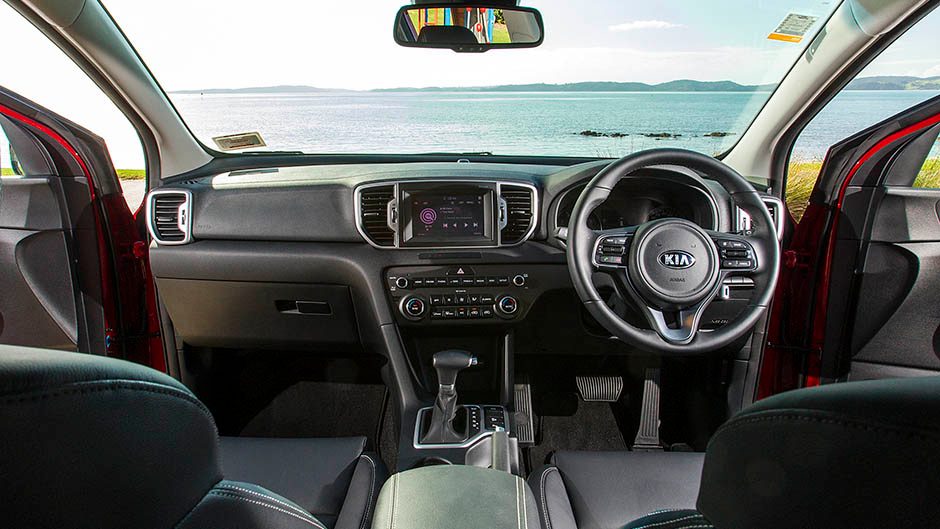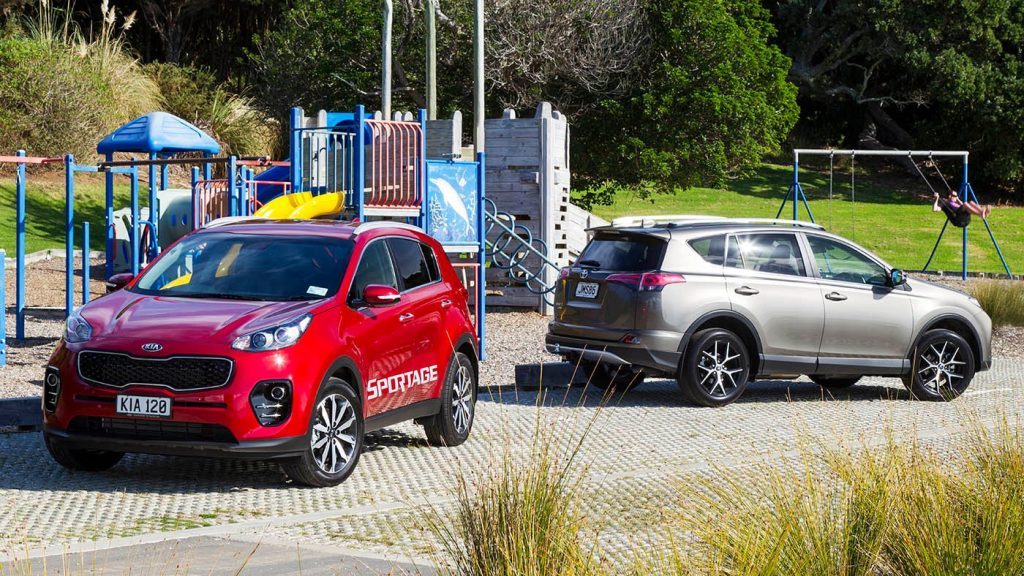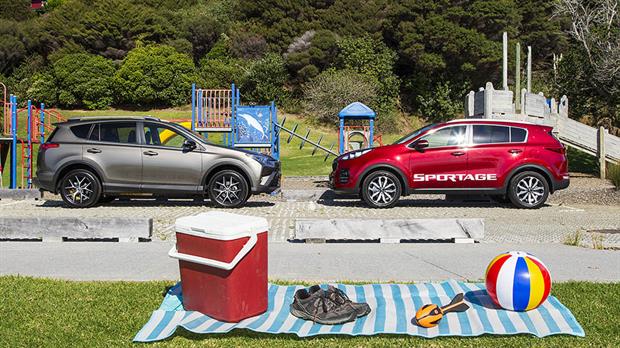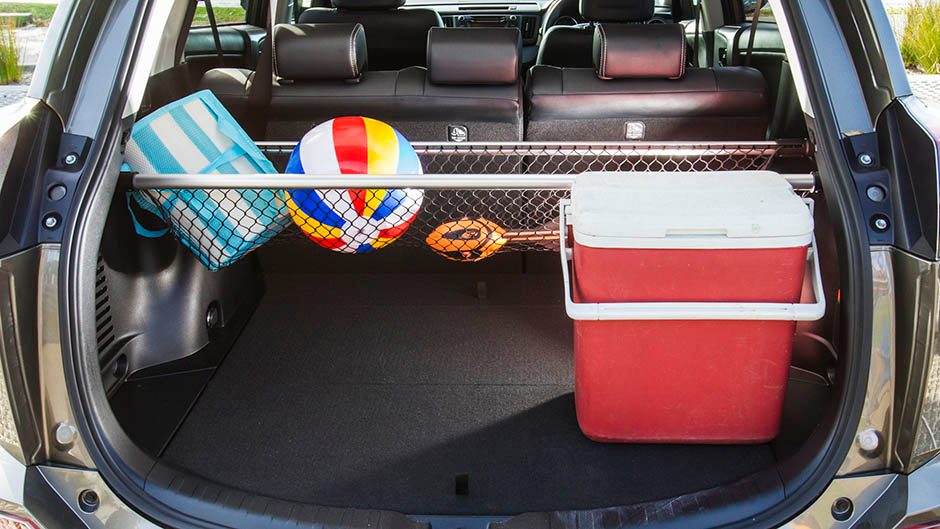2016 Kia Sportage 2WD vs Toyota RAV4 2WD comparison
Words: Kyle Cassidy | Photos: Tom Gasnier
Front drivers are increasingly popular choices for suv buyers, especially townies. Is the new sportage better than the best seller in its competitive set?
Everyone wants to be in a growth industry, at least until the bubble pops. When talking SUVs, it’s hard to see the market’s infatuation wavering and within the crossover sector there’s a growing appetite for front drivers. While 2WD variants aren’t exactly new we are seeing more models being introduced to meet demand from buyers who want the whistles and trinkets but realise they have no need for AWD.
And that’s where the new model of the facelifted RAV4 fits, the Limited adding all the goodies but matched with a base model powertrain. The new Kia Sportage is experiencing a perfect honeymoon; its first three months on sale have seen it at or near the top of the passenger car sales figures. And the movers in the range are the 2WD models. In fact so popular are they we couldn’t get our hands on the variant we wanted for this test, that being the Limited, so had to make do with an EX, and a sign written example as well. Sorry about that. So which one of these company car /family SUVs is the better pick?

Talking dollars
Both brands offer three 2WD offerings in their ranges, each being a 2.0-litre petrol auto. The RAV4 uses a CVT which, in this facelifted model, has been tweaked to deliver improved consumption, now rated at 7.0L/100km overall. The Kia ’box is a proper six-speed auto but rated at 8.2L/100km. In Limited guise, the RAV4 is $47,990, $4000 more than the equivalent Sportage. The facelift adds a new front end to RAV4 (bumper, LED headlights and grille), extra noise suppression and, for the mid- and top-grade models, more safety with AEB, active lane keeping, BSM, radar cruise and auto highbeams now standard.
This safety fit-out is mirrored by the Limited grade of the Sportage though it misses out on adaptive cruise and active lane assist, but both have five stars from the ANCAP team. In Limited guise there are a few spec differences but both have a smart key, leather trim with powered heated seats, dual zone air, back up camera, sat nav with traffic updates, sensors both ends and powered tailgates. The RAV has LED lights and a sunroof, the Sportage larger 19-inch alloys and an electric park brake.
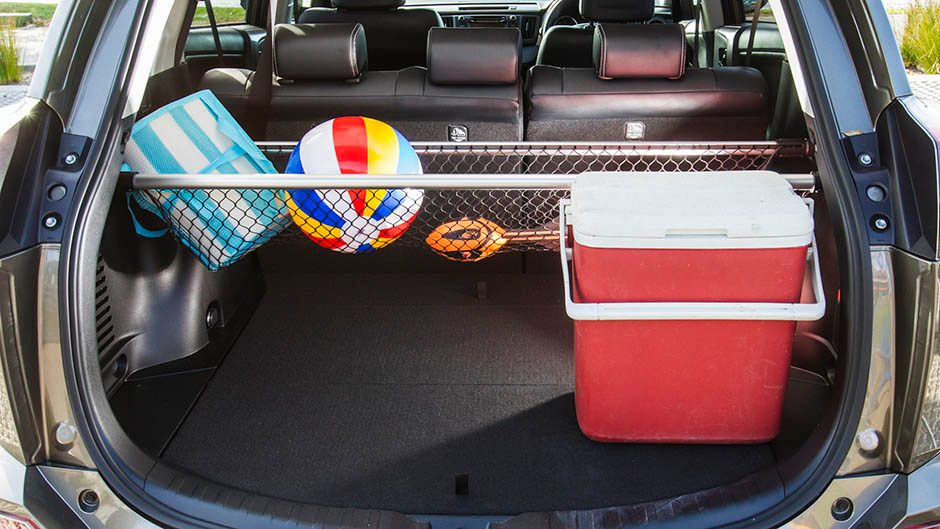
On the go
These two are better at city cruising than rural running, especially the RAV4. It takes a leisurely 12.2sec to hit 100km/h and 8.5sec on the overtake so it’s not the quickest ticket to the beach. It will give tourists in all those rental RAV4s plenty of time to take in the scenery though. The test rig came fitted with a towbar, but loaded up with cargo and a trailer, this RAV4 will be working hard, even at its 800kg braked limit (Sportage 1600kg). The CVT is neither awful nor great being smooth but slow on the take up, and is programmed for faux shifting as you near the upper limits of the rev range. There’s a lull in the power around 3000rpm but it perks up again past 4000rpm if you’re patient. The engine is smooth, and not too rowdy, but would prefer you didn’t keep asking more of it. The Sportage powertrain is more up for it, with an enthusiastic launch feel, and with a mite more power and willingness to push on, it’s comfortably quicker (10.6s and 7.7s), feeling more urgent every time you prod the pedal. Particularly if you nudge the drive mode button to Sport, which is easily accessible in the Kia whereas it’s up under the dash in the RAV4, as if it doesn’t want you to really find it. Both will average between 7 and 11L/100km depending what you’re doing but the Toyota is usually 0.5 – 1L/100km more frugal than the Kia. On city streets, the RAV4 is softer in the spring so rides that bit better, and the steering is lighter too, though both are easy to manoeuvre about, and to see out of.
As for dynamics, the RAV4 has more grip than power, so is fairly safe and staid. The steering points you around without much feel or conviction, filtering all the stuff most people don’t want to bother themselves with. The ride is agreeable but there’s a bit of patter from the rear that we could live without. About the most fun you’ll have here is the occasional hand brake slide to impress the kids. The Sportage turns into the bends with more interest and at least has some oomph to drive out of the bends while there’s a bit more happening at the wheel. The ride isn’t as compliant, but it leans less, and generally has more spunk to its dynamic character. It’s certainly punchier, the auto working to get things moving and will kick down promptly when given a boot. There are no big gaps in the delivery, the shifts smooth and we felt no need to reach for the manual lever. The tyres aren’t the last word in grip however (the Limited model does get wider rubber) and the brakes, much like those in the RAV4, soon tire of silly games.

Inside jobs
While the Toyota presents with sound cabin quality, we thought the Kia radiated a better ambience, even in its mid-grade EX guise. The Kia has a more integrated look but both do a good job of mixing the hard and softer touch surfaces, although the hard door top for the rear passengers is a fine example of shrewd penny pinching. They don’t call them cheap seats for nothing. The leather used for both doesn’t feel all that premium but while the RAV4’s seats are cushier, the Sportage has a better range of driver seat adjustment. Each has the mandatory central screen and these are solely used for the infotainment bits and pieces. Proper hard buttons control other functions.
The definition of the screen in the Kia needs improving, while the soft buttons on the Toyota’s smaller screen are hard to hit on the move. The RAV4’s adaptive cruise isn’t the strictest when keeping speed in check, especially when descending hills, and it will click off as the vehicle in front comes to a stop, leaving you with the job of braking. The BSM of the Sportage is a little cautious, sounding off a warning when, really, there’s plenty of space to squeeze into the adjacent lane.

Sizing them up
These two are dimensionally similar except in overall length, the RAV being 125mm longer, and most of that is added to the rear. It makes the Toyota look bigger than the Sportage, which gives the impression it offers far greater passenger space. But that’s not really the case as the Sportage is surprisingly roomy in the rear seat. While there are a few mm more legroom in the back of the RAV4, it’s not enough to worry about.
The Toyota is a little wider across, but again, not by much. Both rear seats recline for added comfort, and wide doors ensure good entry. With more of a rear overhang dedicated to boot space, the RAV4’s load area is wider, longer and, with a space saver spare, the height is superior too. The full-size spare in the Kia does result in a high-set floor. Both rear seats fold in one motion by pulling the lever on the seat base, and present a fairly flat load space, which again is longer in the RAV4. So if the size of the hold is a key consideration, the RAV4 is one of the best in this class.
The envelope please
Our money would go with the Kia; it’s a better drive and we prefer its powertrain too. There’s enough space to suffice and that it’s as well stocked while being $4000 cheaper seals the win.
| Model | Kia Sportage 2.0 2WD LTD 2016 | Price | $43,990 |
| Engine | 1999cc, IL4, EFI, 114kW/192Nm | Drivetrain | 6-speed auto, front-wheel drive |
| Fuel Use | 8.2L/100km | C02 Output | 190g/km 1510kg |
| 0-100km/h | 10.6sec | Weight | 1510kg |
| Model | Toyota RAV4 2.0 2WD LTD | Price | $47,990 |
| Engine | 1987cc, IL4, EFI, 107kW/187Nm | Drivetrain | CVT, front-wheel drive |
| Fuel Use | 7.0L/100km | C02 Output | 162g/km |
| 0-100km/h | 12.22sec | Weight | 1585kg |



